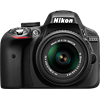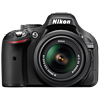Main
Model
Price
Advantages
launch
Announced
Body type
Camera subcategory
Sensor
Effective pixels
Max resolution
Sensor size
Sensor type
Processor
Image ratio w:h
Other resolutions
Sensor photo detectors
Image
ISO
Boosted ISO (maximum)
White balance presets
Custom white balance
Image stabilization
Uncompressed format
JPEG quality levels
Photography features
Minimum shutter speed
Maximum shutter speed
Aperture priority
Shutter priority
Manual exposure mode
Subject / scene modes
Built-in flash
Flash range
External flash
Flash modes
Continuous drive
Self-timer
Metering modes
Exposure compensation
WB Bracketing
AE Bracketing
Screen / viewfinder
Articulated LCD
Screen size
Screen dots
Touch screen
Screen type
Live view
Viewfinder type
Viewfinder coverage
Viewfinder magnification
Videography features
Resolutions
File Format
Microphone
Speaker
Videography notes
Optics & Focus
Autofocus
Digital zoom
Manual focus
Number of focus points
Lens mount
Focal length multiplier
Physical
Weight (inc. batteries)
Dimensions
Environmentally sealed
Battery
Battery details
Battery Life (CIPA)
Storage
Storage types
Storage included
Connectivity
USB
HDMI
Wireless
Wireless notes
Remote control
Other features
Orientation sensor
Timelapse recording
GPS
GPS notes
Samples
Videos
Summary
The Nikon D5200 offers more focus points than the D3300: 39 vs 11. More number of focus points means more convenience when attempting to focus on subjects that are not centred.
The Nikon D5200 is produced with articulated:articulated LCD that will allow the photographer to capture images from any odd perspective.
The Nikon D3300 supports external flash. It provides amazing control over the exposure and lighting of the subject in low light or in bright light situations where the camera owner needs to fill-flash. The Nikon D3300 weighs 430g that is 125g less in comparison with the weight of the Nikon D5200.
Considering the above-mentioned differences the Nikon D5200 will become the best buy. Get the lowest price on Amazon.


